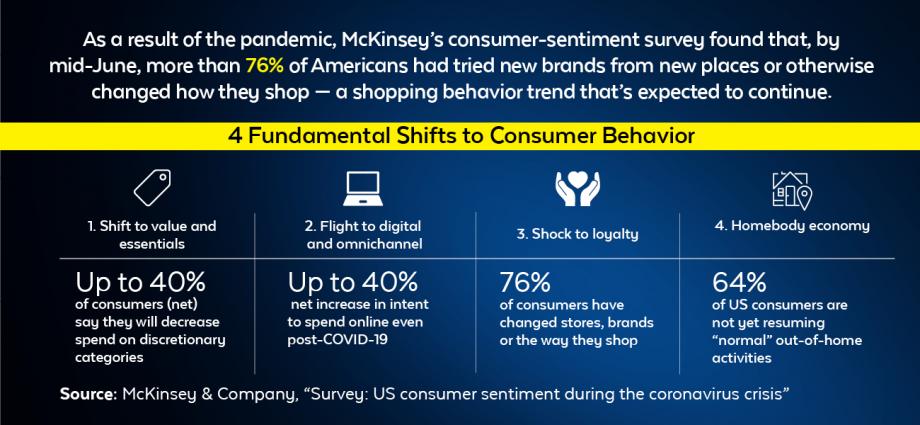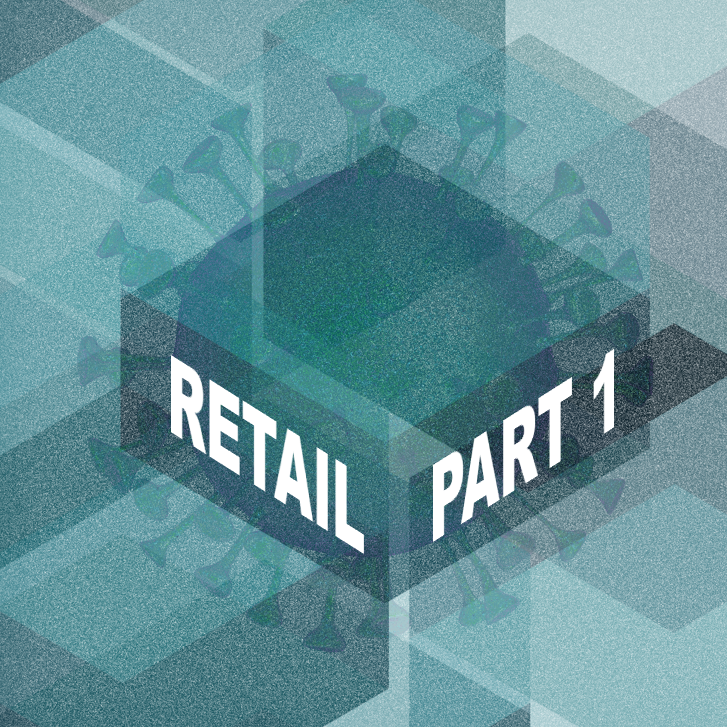While it is too soon to declare victory over the Covid-19 pandemic, brick-and-mortar retail is seeing signs of renewed vigor. As journalist Anne D’Innocenzio (@ADInnocenzio) puts it, “Americans are going back to one of their favorite pastimes: store shopping.”[1] That is good news. D’Innocenzio explains, “The return to store shopping, highlighted in many retailers’ earnings reports in recent days, offers a big relief in part because shoppers return less when they make their purchases at the store — 8% compared with 25% for online, according to Forrester Research. And store customers tend to do more impulse buying. For clothing, for instance, 25% of purchases are done on a whim versus 16% online, says market research firm NPD Group Inc.” To take advantage of shoppers returning to stores, retailers need to do more than simply open their doors. Craig Lennie, Creative Director Rebel & Co, explains, “As we edge closer to a full reopening across the U.S., retail sits at the edge of a second pandemic-fueled transformation. With the future of consumer experiences at stake, retailers must reexamine the prevailing approaches that have defined omnichannel retail for the past decade.”[2] Before examining how the retail sector might have to change (which I will discuss in Part 2 of this article), let’s look at why analysts believe retail is recovering.
Brick-and-Mortar Retail is Recovering
Retail reporter Daphne Howland (@daphnehowland) points to five signs she believes demonstrate the retail sector’s recovery.[3] They are:
1. Retail sales have risen through most of the pandemic. Howland reports, “Except for March and April last year, when, for most of those weeks, retailers selling discretionary goods were shut in an effort to stem the spread of the coronavirus, retail sales in 2020, as tracked by Retail Dive, rose each month compared to 2019. … That bodes well for the rest of year, provided that the pandemic truly recedes.”
2. It may be a new day for clothing sales. As D’Innocenzio noted, the fashion sector does better when consumers shop in physical locations. Howland adds, “All kinds of apparel retailers — department stores, specialty mall stores, off-price stores — watched sales plummet during the pandemic. With employees and their children stuck at home, both for work and play, there wasn’t much need for a wardrobe. … That appears to be changing in a big way. Wells Fargo analysts recently found store traffic up, inventory lean and margins expanding.” Clothing sales are also poised to rebound as children return to in-person schooling this fall.
3. More stores are opening than closing. Is the Retail Apocalypse ending? According to Howland, the answer might be “yes.” She explains, “Last year was rough on brick-and-mortar retail, with record numbers of store closures and a lot of bankruptcies. In some cases that took down whole fleets, as with iconic department store Lord & Taylor. Things are looking up this year, however, with store openings now outpacing closings, according to Coresight Research. All told, U.S. retailers had plans for 3,344 new stores as of March this year, by Coresight’s count, up 39.5% compared to the same point last year and above the 2,649 that Coresight says will close. That’s a new trend; in recent years, closures have far surpassed openings.”
4. The industry’s recovery is broad-based. During the pandemic, grocery and DIY stores fared well. According to Howland, more retailers are now poised to do better. She reports, “Moody’s Investors Service recently upgraded its outlook for the retail industry thanks to what is looking like a strong economy in the U.S. and the effect of expanding vaccines, both of which will help get consumers out and spending. Those analysts now expect retailers’ operating profit in the aggregate to grow a ‘robust’ 10% to 12% this year.” The possible hiccup to a broad-based recovery is inflation.
5. Retailers have evolved. Most analysts agree — as I will discuss in Part 2 of this article — the retail sector will not return to business as usual. Lennie bluntly states, “For retail, expect a reboot, not a return to usual.” Howland adds, “Most businesses and consumers are eager to get back to normal. … While it’s not great news for the mall, several retailers have taken the opportunity to retool their footprints, with retailers as diverse as Gap and Macy’s heading instead to less expensive strip centers that attract more shoppers. Many are also rethinking flagships, moving toward neighborhood-based concepts with the potential of creating more meaningful connections to customers and their communities. Neighborhood shopping areas in general have emerged as optimal locations for stores.”
As Howland’s last comments demonstrate, retail’s future isn’t crystal clear. D’Innocenzio agrees. She explains, “Retailers — particularly mall-based stores and other specialty stores that were struggling even before the pandemic — face plenty of challenges to keep customers coming back. They faced stepped up competition online and from discounters that thrived in the last year. Experts also say that post-pandemic shoppers will be even more demanding: After being forced to stay close to home, they’re looking for better and convenient services and experiences.”
Retail Needs to be More Customer-Centric
Retail reporter Christina Bieniek writes, “No matter how you slice it, retail revolves around the consumer — and that makes the consumer your north star as a retail professional. But following that north star takes work; you have to actively make decisions to keep your team and your company focused while simultaneously adjusting to meet your customer where they are today and where they will be tomorrow. That means decision making is the critical driver of how retailers can grow, transform and innovate.”[4] In Part 3 of this article, I will discuss how data and cognitive technologies (aka artificial intelligence) can help retailers make better decisions. Lennie agrees that understanding how consumer behavior has changed (and continues to change) will be essential for success in the post-Covid world. He explains, “Accessibility and availability have taken precedence during the pandemic, with McKinsey reporting that 73% of U.S. consumers have changed stores, brands, or the way they shop. Changing these new habits will prove difficult, as what started as convenience has now become preference. The long-lasting impact of changes to daily routines means that many of these shifts in how and where people buy will become permanent. For destination retail, the coming months will be a critical period to regain customers and establish the value of returning to shop.” A McKinsey & Company survey found the following:

The staff at Consumer Goods Technology observe, “Despite plenty of news to the contrary, stores aren’t going away anytime soon. In fact, RIS News research shows that nearly 87% of all retail sales still have a store component.”[5] Although the near-term future looks brighter for the retail sector, Howland reminds us that, along with inflation concerns, the return of consumers to physical stores is not guaranteed. She explains, “The consumer remains under pressure. Despite improvement, the employment picture is cloudy, with millions of Americans still out of work, according to the ADP Research Institute. … The pre-pandemic wealth gap and middle class fragility haven’t eased, while pandemic-era anxiety around health and money lingers. Finally, to the extent the pandemic does recede, there is fresh competition for shoppers’ dollars from services, with Morgan Stanley research finding that more than 30% of consumers have plans to spend more on travel and leisure.”
Footnotes
[1] Anne D’Innocenzio, “As shoppers return to stores, retailers are facing challenges of their own,” Fortune, 27 May 2021.
[2] Craig Lennie, “For Retail, Expect Reboot, Not Return To Usual,” The Marketing Insider, 14 May 2021.
[3] Daphne Howland, “5 signs that retail is going to be OK,” Retail Dive, 12 May 2021.
[4] Christina Bieniek, “The future of retail belongs to those who make the best decisions,”” Retail Dive, 3 June 2021.
[5] Staff, “3 Retail Execution Rules for the Next Normal,” Consumer Goods Technology, 24 March 2021.





